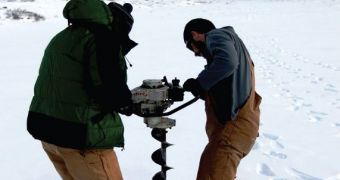Astrobiologists say that searching for life on moons such as Jupiter's Europa and Saturn's Enceladus is a very complex task. However, the effort can be made simpler by conducting proxy studies here on Earth, specifically at the edges of the Arctic ice sheet.
Both Europa and Enceladus have surfaces covered by miles-thick ice sheets. Astronomers believe that both these worlds may have oceans of liquid water trapped close to their respective cores, deep under the ice. Since the cover also reduces radiation levels, life could potentially develop and thrive there.
But reaching these hypothesized oceans is not an easy task, since we currently do not have the necessary technologies to drill into tens of miles of ice on another celestial body, using very limited power sources. Scientists are currently working on this problem.
In the meantime, biologists can get a glimpse of the type of research they will need to conduct on these alien worlds, if they want to find potential lifeforms. The edges of Arctic ice sheets are the best proxies available here on Earth for this task.
One of the primary objectives of these investigations is the study of methane. This hydrocarbon is present on a number of different worlds, including Mars and Saturn's largest moon, Titan. Figuring out how it seeps up from the ice, and what produces it, is key for astrobiology studies.
There are two main sources of methane on our planet – biotic and abiotic ones. Biotic sources are, for example, various types of microbes, cattle and so on. Abiotic sources include the chemical reactions that develop between water and certain types of rocks.
“It is increasingly clear that on Earth, there are cold-adapted methanogenic microbes in Arctic, Antarctic and sea-bottom settings. Acetate fermentation is the principal pathway accounting for as much as 95 percent of methane production in these cold environments,” says Jeffrey White.
The expert holds an appointment as a research scientist and environmental biogeochemist at the Indiana University. “It seems reasonable to search for evidence of similar biological processes on other icy bodies in our solar system,” he concludes, quoted by Astrobiology Magazine.

 14 DAY TRIAL //
14 DAY TRIAL //